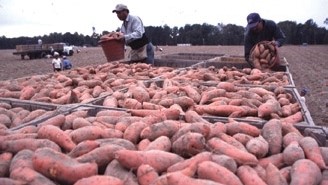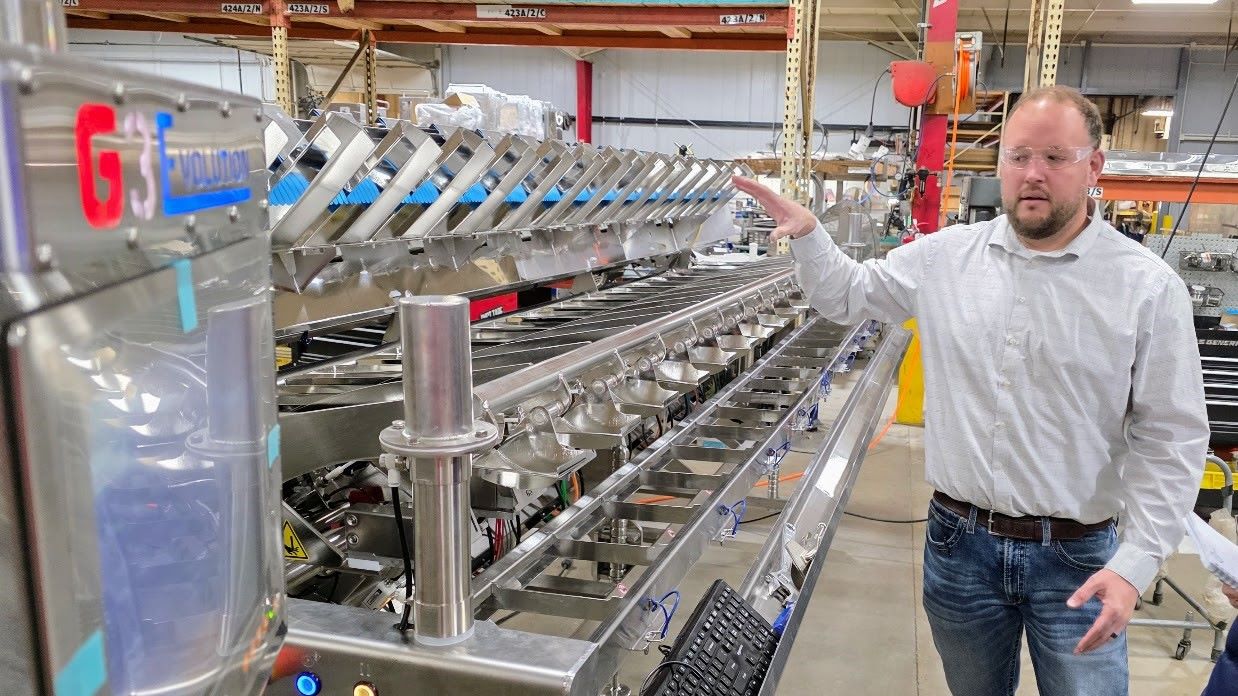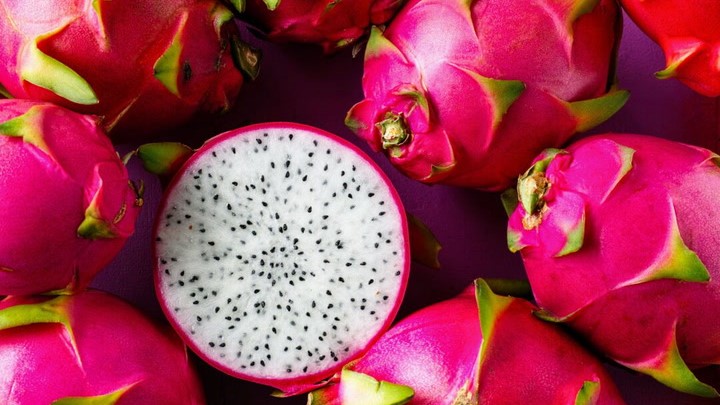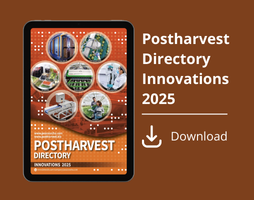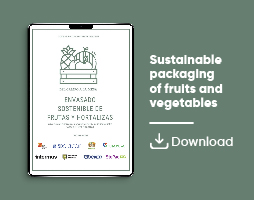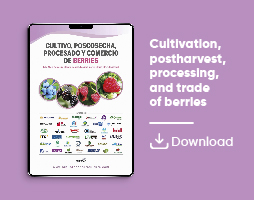News
Effects of storage conditions on potato tuber microbiome and how it influences tuber dormancy and sprouting
M. Dogramaci et al. show that identified bacterial species can further be explored as potential sprout growth modulator, while other species can be utilized for potato disease management during postharvest storage
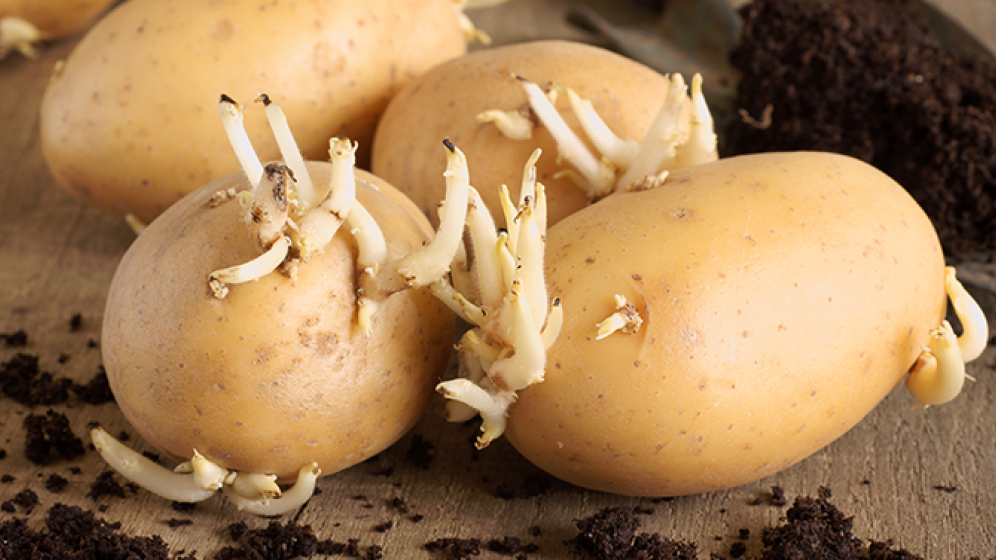
Potato tubers are stored with minimal cleaning after harvest, carrying a layer of microbiome in tuber tissues from field to storage.
The impact of postharvest storage on potato tuber microbiome is mostly unexplored. This study reports the effects of variable storage temperatures and durations on the potato tuber microbiome and how it influences tuber dormancy and sprouting.
After harvest, potato tubers (cv. Russet Burbank) were either stored at 8°C, 21°C, or transferred from 8°C to 21°C 3 days prior to sampling of tuber tissues (primary bud, secondary bud, and tuber flesh) at 8, 12, and 17 weeks of postharvest storage.
Sprout growth of the tubers was monitored weekly and different tuber tissues were analyzed for sugar content and the microbiome profile using rDNA (16S for bacteria and ITS for fungi) sequencing.
Cold storage at 8°C suppressed tuber sprout growth and resulted in lower reducing sugar content in bud tissues when compared with tubers stored at 21°C.
Overall, bud tissues exhibited significantly higher fungal and bacterial diversities compared with the tuber flesh.
Storage temperature and duration significantly influenced bacterial and fungal communities and core bacterial species identified in tuber tissues have known beneficial roles in potato, while major fungal species identified in tuber tissues seem to be potentially pathogenic.
Identified bacterial species such as Flavobacterium frigidarium and Bacillus coahuilensis can further be explored as potential sprout growth modulator, while Bacillus megaterium, and Arthrobacter sp. can be utilized for potato disease management during postharvest storage.
Introduction
Microbes are ubiquitous to agricultural ecosystems and play important roles across the food production chain. Beneficial microbes of soil rhizosphere or plant phyllosphere contribute to soil and plant health and influence overall resilience and performance of food crops (Wei et al., 2019).
On the contrary, a vast number of microbes are pathogenic and can affect growth and productivity of food crops (Guo et al., 2024).
Roles of microbiome, whether beneficial or pathogenic, are not only restricted during plant growth but can also impact the quality of plant produce after harvest (Kusstatscher et al., 2020).
The macro and microenvironment during plant growth and development, as well as the storage environment of plant produce, influences the microbiome associated with plant tissues and produce. Environment mostly shapes diversity, abundance, and structure of the microbial community, which subsequently impacts shelf-life, nutritional, and end-use qualities of plant produce (Trivedi et al., 2022).
Furthermore, changes in the physiology of plants or their produce under different growing environments alter the structure and composition of intrinsic microbiome (Wassermann et al., 2022).
The diversity and abundance of microbiome present in the surface (epiphytes) or in the internal tissues (endophytes) of the produce also have relevance in mitigating physiological disorders and plant diseases during storage (Droby and Wisniewski, 2018, Zhang et al., 2021).
A comprehensive understanding about microbial diversity and abundance can indicate overall quality of plant produce at postharvest stages. Therefore, elucidating the role of the microbiome during long-term storage of major plant produce has wider relevance in the context of determining their storage as well as end-use qualities.
Among major food crops, potato (Solanum tuberosum) ranks third in terms of human consumption (Devaux et al., 2020). The rich nutritional profile of potato tubers, which is characterized as a good source of macronutrients, vitamins, minerals, fibers, and phytochemicals, makes it a reliable and affordable food choice for large number of populations globally (Dalamu et al., 2023).
To supply both fresh and processed food markets, approximately 90 % of the harvested potato tubers are placed in cold storage for up to a year. As potato tubers are kept a significant amount of time in storage, maintaining optimum shelf-life and nutritional qualities during postharvest storage is critical to support industry and market needs.
One of the major postharvest challenges is controlling tuber sprout growth during storage, as sprouting affects processing and nutritional qualities and reduces market values.
Storing tubers under cold temperature (7–10℃) with high relative humidity (∼95 % RH) and good ventilation is a common practice to control sprout growth, while chemical treatments with sprout inhibiting properties are also utilized based on the potato market classes.
The widely used sprout inhibitor treatment (isopropyl N-(3-chlorophenyl) carbamate, or CIPC) is banned in some countries (e.g., European Union, Japan, Brazil) and under regulatory scrutiny due to environmental safety or public health concerns (Dogramaci et al., 2024, Paul et al., 2016).
Finding natural and safe sources to control tuber sprout growth is extremely important for the potato industry.
Microbiome, dormancy. and disease
In this context, understanding the role of the microbiome in tuber dormancy progression during long-term storage has wider relevance.
Most of the potato microbiome related research investigated the role of microbes on growth, stress resilience, yield, and disease prevention of the crop (Adamo et al., 2024, Gush et al., 2024, Martins et al., 2023, Martins et al., 2024, Pfeiffer et al., 2017, Tamayo et al., 2022).
Previously, a few studies have evaluated the impact of microbiome on disease and tuber qualities during storage (Buchholz et al., 2021, Li et al., 2022, Macharoen et al., 2024, Maciag et al., 2020, Xie et al., 2022). Buchholz et al. (2021) observed a significant shift in the bacterial community composition of potato tubers from harvest to dormancy break and sprouting, and their results suggested a potential role of Flavobacterium sp. in inhibiting sprout growth of potato tubers.
In another study, Buchholz et al. (2019) suggested that bacterial community recruited from soil are generally transmitted from one tuber generation to another, and this transition was not dependent on potato variety.
Vertical transmission of distinct bacterial and fungal species from field to storage and in the sprout of the seed potato tubers in the following crop season was reported by Song et al. (2024). Differences in bacterial and fungal community composition and diversity in potato tubers were reported based on different production areas and storage periods (Xie et al., 2022). This report also highlighted negative correlations between pathogenic and antagonistic microorganisms in diseased potato tubers during storage (Xie et al., 2022).
Collectively, these studies suggest that soil or the rhizosphere, where the plants growth largely influences the microbial profile of the potato tubers in storage and composition of microorganisms’ changes during the storage period.
Storage environment
It is also important to determine how storage environment (i.e. temperature, relative humidity) influences the microbiome of potato tubers during long-term storage, as it may impact tuber physiology and quality.
A study investigating the effect of storage temperatures on bacterial profiles of potato tubers with scab revealed that tubers stored at 6℃ had higher bacterial diversity (alpha-diversity) when compared to tubers stored at 4℃ (Macharoen et al., 2024).
In another study, higher survival of beneficial bacterium consortium (Enterobacter amnigenus, Rahnella aquatilis, Serratia plymuthica, two different strains of Serratia rubidaea), utilized as biocontrol treatment against potato soft rot (Pectobacterium sp. and Dickeya sp.), was observed at 8℃ when compared with 21℃ (Maciag et al., 2020).
There is a significant knowledge gap in how storage environments, particularly storage temperature and duration impact tuber microbiome, and whether changes in microbiome profile have any influence on sprout growth and tuber quality or not.
The relationship between potentially pathogenic and beneficial microorganisms that are present in different tissues of potato tubers during long-term storage also needs to be investigated.
Therefore, the main objectives of this study were to:
- Examine the changes in the microbial profile of different potato tuber tissues (primary bud, secondary bud, and tuber flesh) under different storage temperatures (8℃ vs. 21℃);
- Determine potential relationships between microbial (bacterial and fungal) profiles and tuber storage qualities (e.g., sprout growth and sugar profile).
Source and complete paper
Postharvest storage conditions impact potato tuber microbiome and dormancy progression
Munevver Dogramaci, Malick Bill, Evandro A. Fortini, Dipayan Sarkar & Shyam L. Kandel
https://doi.org/10.1016/j.postharvbio.2025.113766
https://www.sciencedirect.com/science/article/pii/S0925521425003783
Picture
Mississippi State University Extension - Why Do Potatoes Sprout?
https://extension.msstate.edu/blog/why-do-potatoes-sprout


